|
Until the twentieth century, Upper Penn
was predominantly a farming community with several hundred
acres of fields used for agriculture and pasture. Crops
included wheat, oats, potatoes, peas, beans, and turnips.
Livestock included horses, cows, sheep, and pigs.
Several families had farms in the area
and worked on them for many generations. The land was rented
from large landowners, mostly from The Duke of
Sutherland. In the 17th century prominent farming families
included the Bradneys, the Chamberlains, the Garbetts, the
Johns, the Motts, the Muchalls, the Tonges, and the
Whitmores. Many families had small holdings, either owning
or renting a small piece of land.
In the 19th century several wealthy businessmen moved into the
area, buying land and building large houses. The more
important local landowners were the Duke of Sutherland, John
W. Sparrow of Penn Hall, Rev. William Dalton of Lloyd House,
Robert Thacker of Muchall Hall, and Sidney Cartwright of The
Leasowes. By this time many small holdings and smaller farms
had been integrated into the larger farms which dominated
the area. The main farms were:
| |
|
|
Beeches Farm, Church Hill
Coalway Farm off Coalway Road
Leasowes Farm, Merry Hill
Manor Farm, Church Hill
Mount Farm, Pennwood Lane |
|
Muchall Farm, Mount Road
Newhouse Farm, Warstones
Oxbarn Farm, Warstones Road
Penn Moor Farm, Vicarage Road
Pennwood Farm, Pennwood Lane |
| |
|
|
| Prominent farmers included: |
Mr. Bott, Leasowes Farm
Edward Collins, dairyman, Penn Common
The Chidlow family, Manor Farm
Frank Howard Jeavons, Mount Farm
Randle Jeavons, Muchall Farm |
|
John Jenks, Penn Moor Farm
Thomas Keay, Oxbarn Farm
James Lakin, farmer, Carlton House
T. Mansell, Coalway Farm
John Henry Minett, Beeches Farm |
| |
|
|
Other farmers included
Thomas Hughes, a pig dealer on Penn Common, William
Smith, and Charles Webb, cowmen on Penn Common, Robert
Whitehead, a poultry farmer on Penn Common, and Mrs
Downton, a dairy farmer at Brook Cottage, Penn Common,
and the Goad family who later ran Mount Farm.
Manor Farm
|
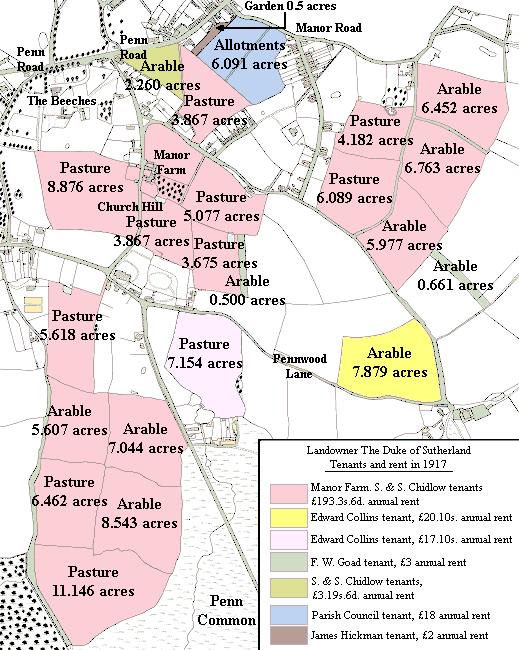
Details of pieces of land sold by The Duke of
Sutherland in 1917.
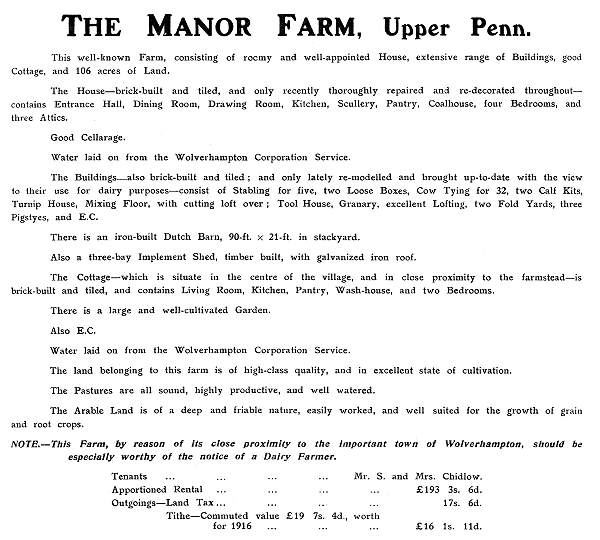
From the 1917 sale catalogue.
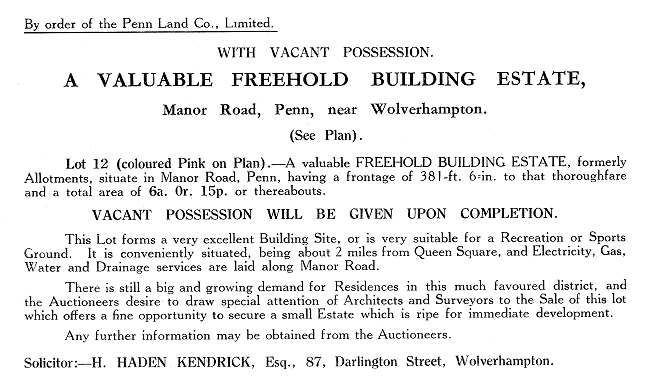
The allotments on the map above
were sold to the Penn Land Company Limited, and resold
on 28th May, 1930. The site was purchased for the
building of Manor Road School.
|
| Brook Cottage and Dairy
Farm |
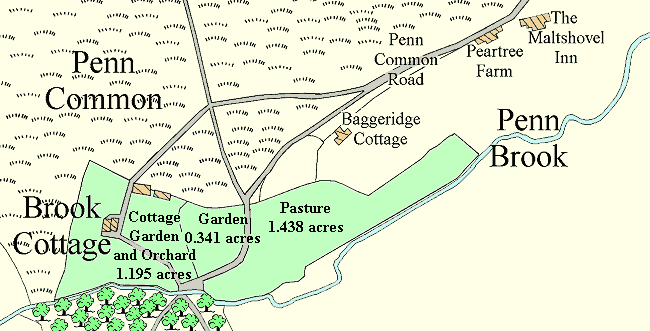
Also sold in 1917 was Brook Cottage and farm
in the south western corner of Penn Common.
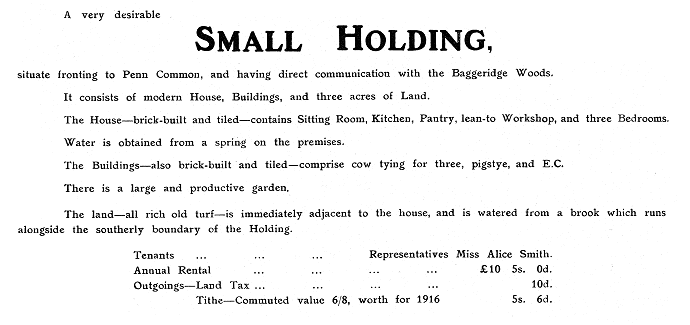

Old Penn Common.
Fields at Upper Penn
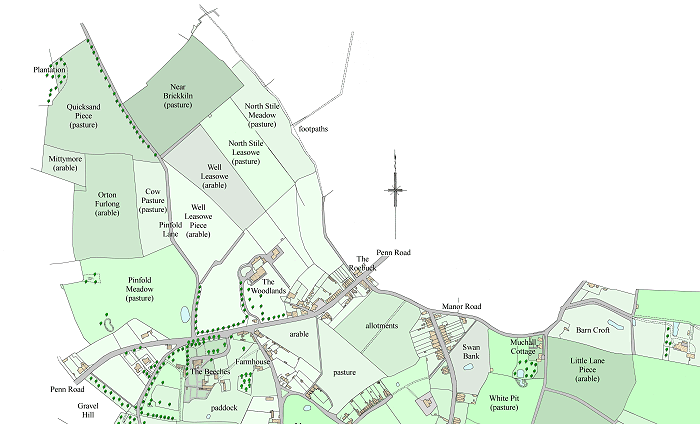
Upper Penn Fields north of the Penn Road.
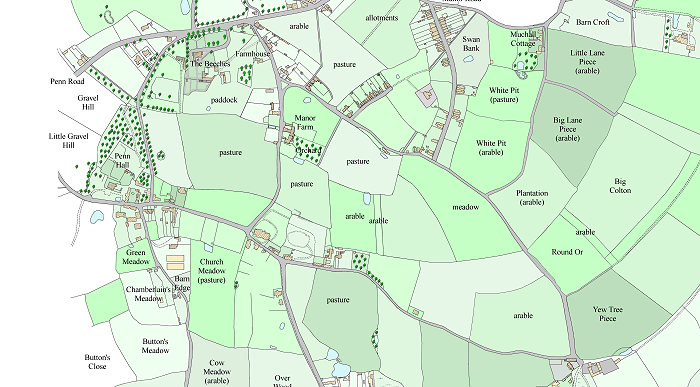
Upper Penn Fields south of the Penn Road.
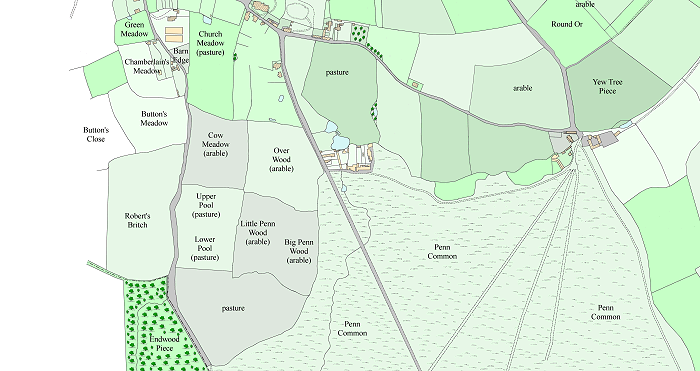
Upper Penn Fields to the south.
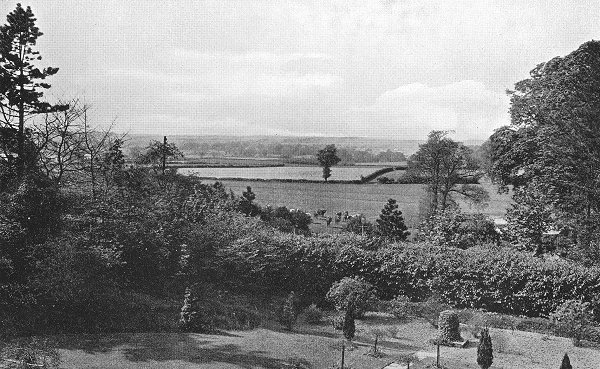
A rare view looking across the
fields at Upper Penn from The Beeches. In the centre is
Pinfold Meadow with Orton Furlong, and Cow Pasture
behind. Just visible in the background is Quicksand
Piece and the plantation. Pinfold Lane is behind the
tree on the far right. |
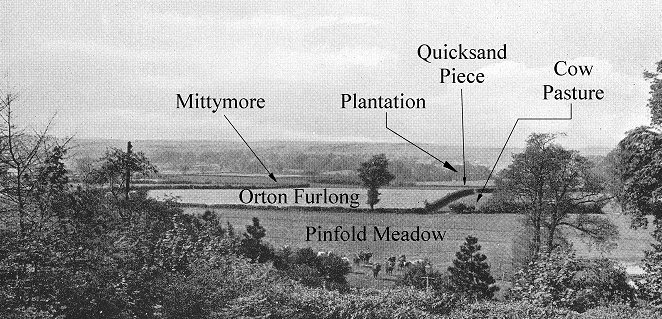
A close-up view of the previous photograph.
Beeches Farm
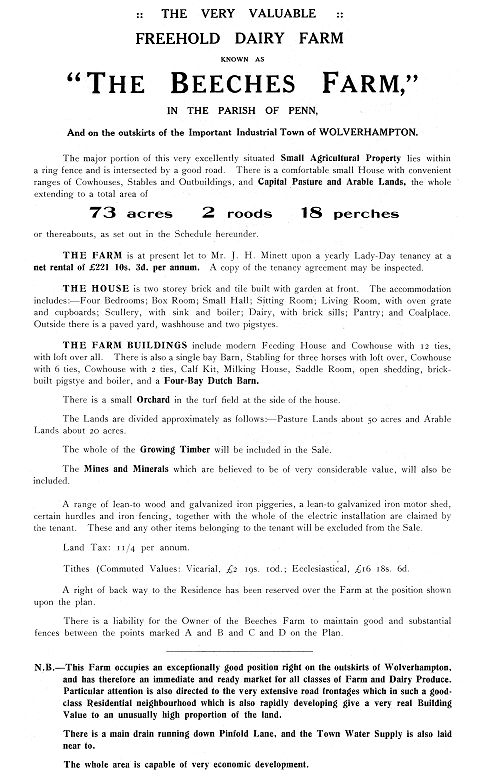
From the sale catalogue. July 1923.
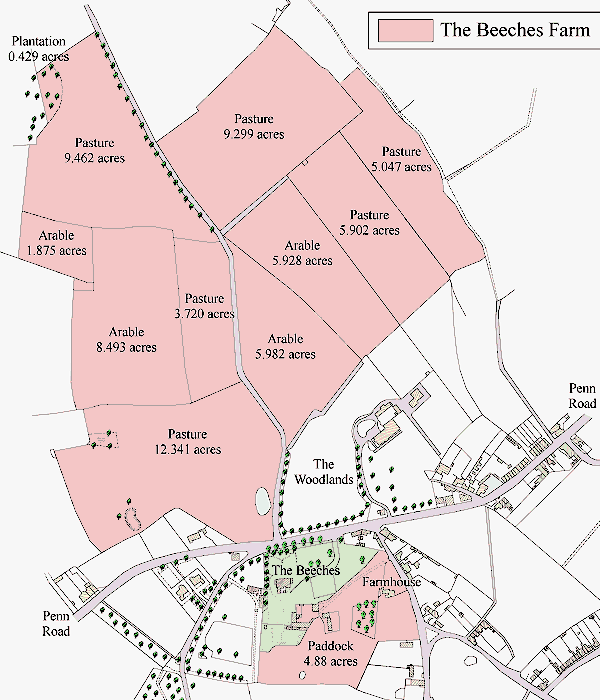
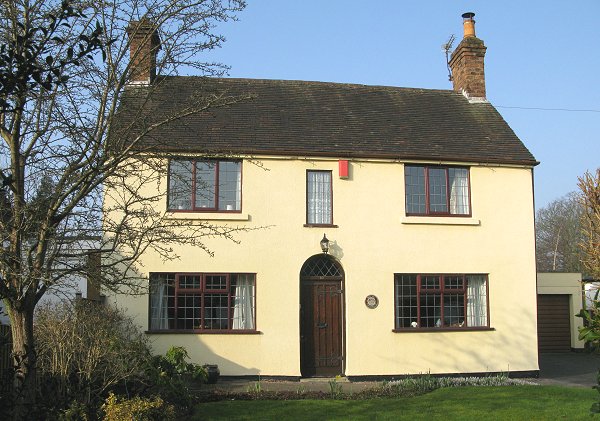
The Beeches farmhouse, as it is today.
|
The
Beeches, originally a farmhouse
The house is an early example of one of
the many gentlemen's residences that dominated the area. It
was built around 1770 as the farmhouse of Upper Penn Farm,
later known as Beeches Farm, and occupied by the Lanns
family. It is thought to have been named after the copper
beech trees that were a feature of the garden. During the
later part of the 19th century the house was owned and
occupied by Martha Warner, her two unmarried daughters,
Elizabeth and Sophia; also Rebecca Simmons a cook and domestic
servant, Mary Carter a housemaid, and Alfred Penzer, a
footman and domestic servant. The Warner family were
property owners who derived their income from rents.
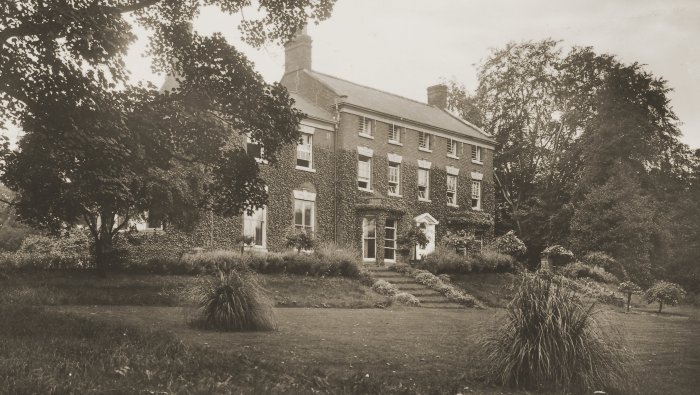
The Beeches. From an old postcard. |
|
The house was later acquired by Francis
J. J. Gibbons of James Gibbons Limited, St. John’s Works,
Church Lane, Wolverhampton. The firm made locks, all kinds
of builders' ironmongery including doorplates, knobs,
handles, geared fanlight openers, panic doors, door springs
and also ‘Cunard’ cycles.
On July 25th, 1923 he sold the house to
sheepskin rug manufacturer Henry Evers Palfrey for £3,650
and moved to Penn Hall. In the early 1930s the house was
sold to the Board of the Royal Hospital who purchased the
house and adjoining land. They adapted it for use as a
convalescent home for women, to replace the existing St.
Catherine’s Convalescent Home, at The Butts, Penn.
In the Second World War extra beds were
desperately needed for wounded soldiers at the Royal
Hospital and so The Beeches was converted to a children’s
hospital with 30 beds. |
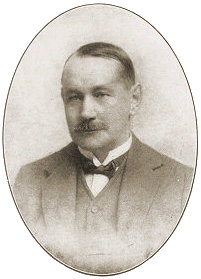
Francis J. J. Gibbons. |
|
After the war, children treated at the
Royal Hospital were sent to The Beeches to recuperate when
their condition improved. Girls who were too young to enrol
as trainee nurses, lived in the top of the house, and
carried out basic treatments as an introduction to nursing.
There were also gardeners who maintained the grounds, and
ran the kitchen garden and greenhouses to provide fresh
produce for the hospital.
Hundreds of local children suffering
from illnesses such as polio and tuberculosis were looked
after in the house, but by the late 1980s it had fallen into
a bad state of repair, and closed in 1989.
In 2000 plans were made for the
refurbishment of the house, and an extension of the site.
The new hospital officially opened on 17th May, 2004 under
the name of The Beeches Training and Education Centre. |
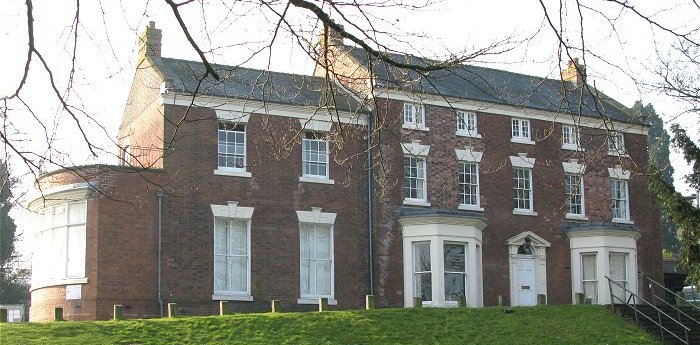
The Beeches today.
| Details from the July
1923 sales brochure: |
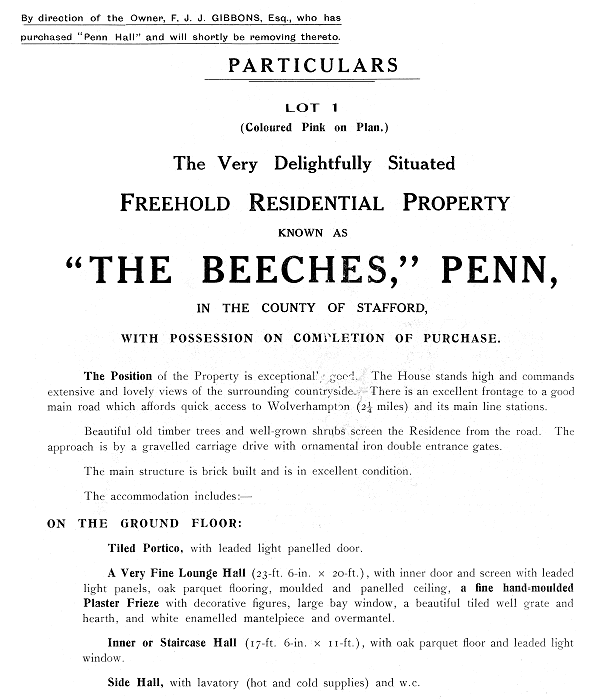
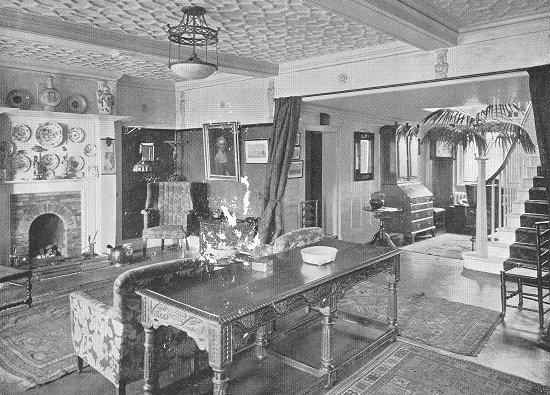 |
The lounge hall. |
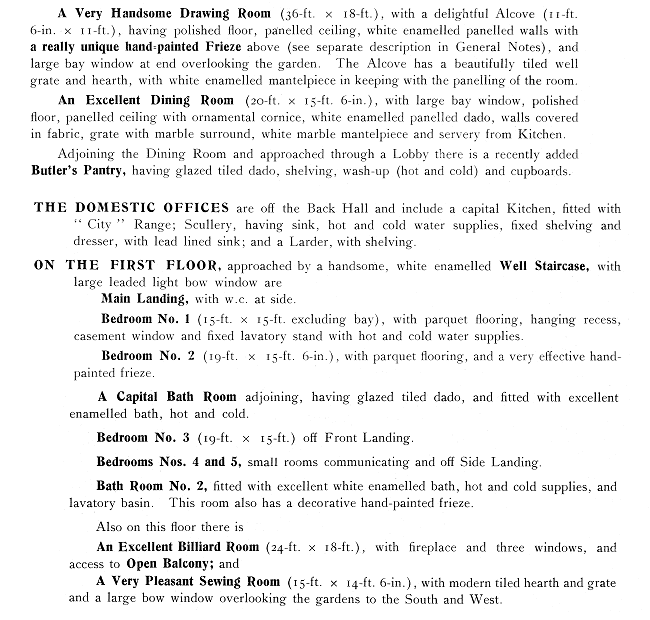
| The drawing room. |
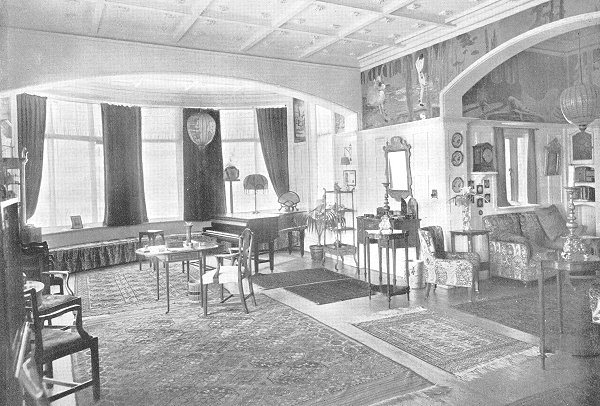 |
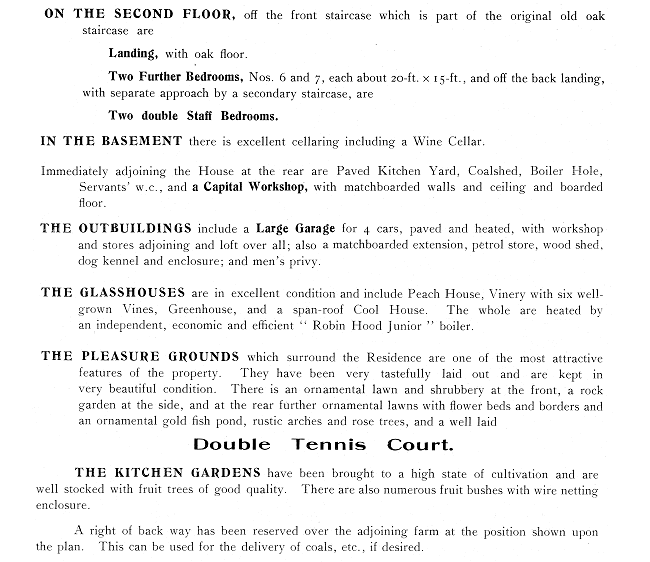
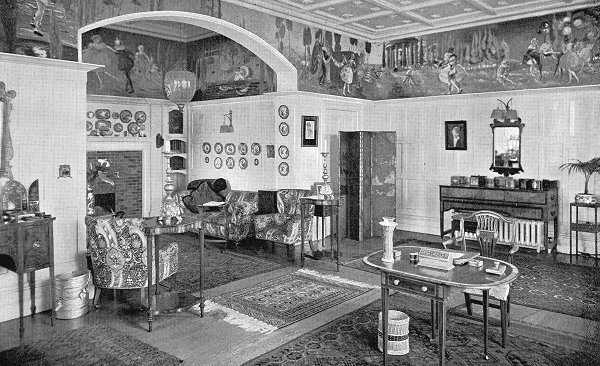 |
Another view of the drawing
room. |
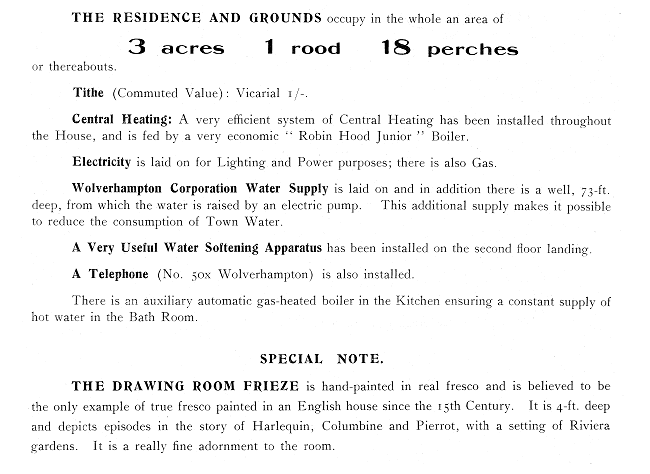
 |
|
Return to the
Penn Menu |
|